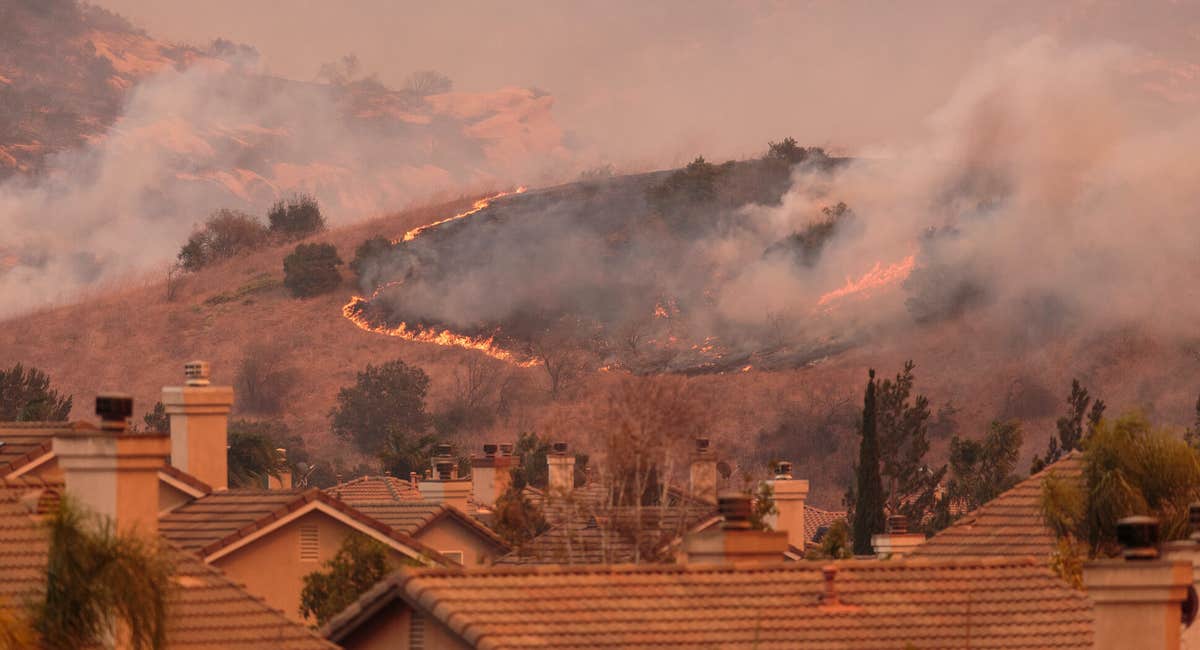In California and elsewhere, authorities are learning the conditions that make wildfires occur can happen at almost any time.
“There’s no such thing as a fire season,” Scott McLean, Cal Fire's Deputy Chief of Communications, said in an interview with Yahoo News. “Right now, we’re looking at a fire year. We’re having fires every month of the year.”
Why there’s no wildfire season anymore
Wildfire seasons historically vary by state. In the western US, wildfires are common in summer and fall; the Midwest sees more wildfires in the spring. But with every passing year, these timeframes become more and more obsolete.
Let’s take a look at why wildfire season is now year round.
1. Climate change is causing more droughts
Many parts of the Earth have new normal temperatures roughly 2 degrees Fahrenheit higher than since 1850. That might not seem like much, but that amount of warming creates a lot of change: heat waves, droughts, water shortages, extreme precipitation, rising sea levels, and fires, to name a few.
These rising temperatures are the reason California has seen record high temperatures and regularly experiences drought conditions across the state. The lack of moisture increases fuel flammability and availability, making a clear link between increased drought and increased fire risk.
Drier conditions also increase forest pests, such as the mountain pine beetle, that can weaken or kill trees. Dead trees become ready-to-burn fuel.
2. There’s a lot of fuel for massive fires
Wildfire behavior depends on fuel, weather, and topography, and dead and dying trees have become tinder for wildfires in recent years. The US Forest Service maintains a database of tree mortality across the United States. Since 2010, California’s national forests alone have an estimated 129 million dead trees, many near communities, campgrounds, trails, and power lines.
That’s ready-made fuel that even the tiniest spark can ignite. And the extreme heat that creates the fuel can also cause lightning strikes that start the fire.
3. Wildfires are spreading faster
Not only is it easier for wildfires to start in dry conditions, but they spread faster, too. A wildfire will spread more quickly when it's fueled by drier vegetation. Essentially, the fire doesn’t have to contend with water, so it can burn faster.
As wildfires have demonstrated repeatedly the last several years, it’s not only acreage that’s in jeopardy. Many homes and communities are nestled near forests and may not have much notice when they need to evacuate.
4. Wildfires are getting harder to contain
Wildfires are getting more difficult to put out in part because of the abundance of ladder fuels in overgrown forests. These are low-lying tree branches, shrubs, and small and medium trees under the canopy of larger trees. Once a slow-burning surface fire on the ground reaches these ladder fuels, fires can spread rapidly to the entire top canopy. When those big trees are burning, embers blown by the wind can ignite neighboring trees and can be spread further downwind.
Wildfires are even more dangerous when they coincide with other types of storms. The 2023 Maui fire, for example, moved much faster than it would’ve otherwise, driven by tropical storm-level winds.
Similarly, parts of Northern California also witnessed fire tornadoes in the summer of 2020. These vortices of flame are formed through extreme heat, uneven terrain, and turbulent winds. Because they create their own weather system, fire tornadoes can be incredibly hard to combat.
5. Current fire control policy isn’t helping – and humans aren’t, either
According to the US Fire Service, an overemphasis on fire suppression (putting out fires as soon as they start) is part of the reason wildfire season is year round. Instead, it recommends using hazardous fuel treatments that include thinning, prescribed burns, and pruning to help restore forest health.
But another issue is the growing number of people living in communities that bump up against landscapes that have a lot of wildfire risk. These areas are known as the wildland urban interface (WUI), and fires are incredibly hard to contain in them. With the WUI growing by approximately two million acres per year, more people will be at risk during wildfires.
Humans aren’t doing their part to stave off fires, either. Many fires start by human negligence, like pyrotechnics used in a Fourth of July celebration. On average, fireworks cause 19,000 fires every year. Not all of these count as wildfires, to be sure. But the point is that all of us could do more to reduce fire risk.
Building wildfire resilience
You can do your part in your community to reduce the likelihood and impact of wildfires by:
-
Clearing brush and trees near your home.
-
Remodeling with fire-resistant design features and noncombustible materials.
-
Avoid parking on dry weeds or grass.
-
Making a fire safety plan for your family.
To protect yourself and your home from wildfires, wildfire insurance is a must. Luckily, this coverage comes part and parcel with your home insurance.


